1. Introduction
Vendor economy is an important part of the national economy and push the economy forward [1]. China's vendor economy has been driven by rapid urbanisation, with large numbers of people moving from rural to urban areas, and without a matching increase in jobs, it is extremely vulnerable to a fall in employment and economic depression. By taking up a temporary "job" at a low cost, unemployed residents have found a way to make a living and continue to live in a rapidly developing city. But the constant development of the Internet has hit the real economy so hard that the vendor economy is gradually disappearing. Since the COVID-19 outbreak, the vendor economy, which has weakened for a long time, is showing new luster again. As the new pneumonia epidemic has gradually been effectively controlled, we have entered the post-epidemic era, and it is a matter of urgency to make the national economy recover steadily and improve national employment gradually. On June 1, 2020, Premier Li Keqiang pointed out during his visit to Yantai City, Shandong Province that the vendor economy is one of the most important sources of employment. The heat of the vendor economy began to spread. Because of its low threshold, low cost and other characteristics, it becomes a choice for people to employment.
But at the same time, it is facing many difficulties in management. Research has suggested some of the current situation and influence of vendor economy in China [2]. For example, the economic quality of the stalls is low and the stall owners are not aware of the environmental problems that can cause environmental pollution. The whole article takes a macro perspective on the analysis of the vendor economy, such as national policy direction, but ignores the impact of micro factors, such as the movement of people, on the development of the vendor economy. Meanwhile, most researches only mention some of the problems but not investigate people's recognition of different measures for various groups and there is no mention of the relationship between the vendor economy and urban culture.
This research will be mainly divided into two parts. One is to focus on the effectiveness of measures for consumers, vendors and governments from the perspective of people and the other is to explore the relationship between the vendor economy and urban culture by searching literature, distributing questionnaires and interviewing, which can better analyze the features of current policies. The research was limited to the perception of teenagers but not the perception of every ages and was limited to individual cities.
2. Literature Review
From reading a lot of papers, we can make a conclusion that most of the scholars mention the current situation of vendor economy and the impact of existing measures.
2.1. Benefits
Prior studies have identified many benefits for vendor economy like providing convenient shopping for the old who live in the city but are not familiar with using the online shopping [3] and provide cheap necessities and employment [4]. And scholars like those in China have also mentioned that the vendor economy is a very high means of increasing jobs and boosting the night market economy and tourism for China [5]. Thus, it seems that there is a strong existence and justification for a vendor economy.
2.2. Problems
The same floor economy has also had many negative effects on people's lives. Yao Su Xiao, a scholar, has mentioned that the stall economy can pollute the environment with discarded plastic bags, and that the irregularity of stalls can cause traffic jams and increase the burden of urban governance [6]. It is no coincidence that Wang Yongshuai has also mentioned the uneven quality of the products sold at the stalls [7].
2.3. Solutions
Some scholars also mention there are also some suggestions for different groups, such as sorting trash contributes to improving the environment and recycling to increase in street vendors’ operating cost [8] and planning to locate in the permission zones which can not only promote the stability of the street vendors but is also convenient for urban management [9]. These measures are very effective in the expected circumstances. Jiang Wenhao also proposed to innovate the display mode of the ground stall goods, using people's herd mentality to attract more customers, and at the same time to strengthen the comprehensive quality of the managers to form a good competitive atmosphere [10].
However, most of the literature only analyzes the current situation and management measures of vendor economy from a macro perspective. It doesn’t pay attention to the relationship between the vendor economy and urban culture and their influence on each other.
3. Methodology
The research report is based on a combination of primary and secondary sources, which includes questionnaire, interview and some materials .
3.1. Questionnaire & Participants
A questionnaire with ten questions is created in Quizizz and 169 participants filled out it, which include 55 men and 114 women and were distributed from first-tier to fifth-tier cities. Their age range covers 10-65 years old and is mainly concentrated in the adolescent age group. The questionnaire asked the participants about the current situation of vendor economy and which measures they think are more effective.
3.2. Interview
The interview sites are mainly night markets in Yantai, Jinan and Weihai. The interviewees involve merchants and operators, and the interviewees are random assigned. The interview questions were about their attitudes towards the combination of urban culture and vendor economy.
3.3. Material
Different sources have been used to search for some information: CNKI, Web of Science and Science Direct. Some newspapers like China Daily and some journals like Journal of Asia-Pacific Business also have been used here. They are used to find relevant research articles to study the measures taken by the government.
4. Result
To analyze the sample results more accurately, the data is further divided into six graphs.
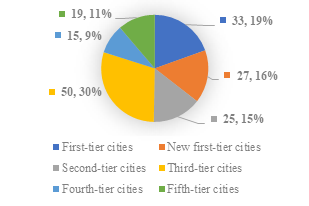
Figure 1: The distribution of the participants’ residence.
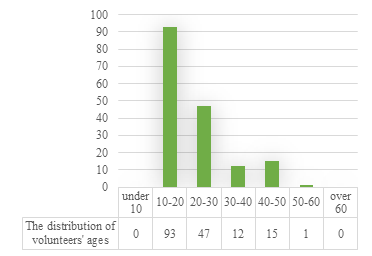
Figure 2: The distribution of the participants’ ages.
Figure 1 and Figure 2 are both about the characteristics of participants. Graph 1 shows that participants were spread across a wide range of cities, with the largest proportion of participants coming from third-tier cities, at 30 percent. It can be concluded that the age level of participants is mainly distributed in 10-30 years old from Graph 2.
Figure 3 tells us that 53% of people think that the vendor economy is widespread and 47% think that it is not, which is close to a 1:1 ratio.
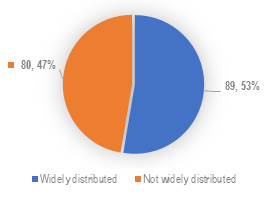
Figure 3: The universality of vendor economy.
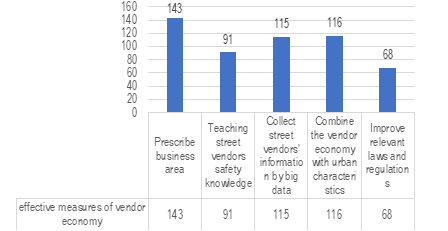
Figure 4: Effective measures of vendor economy.
In Figure 4, prescribe business area is considered to be the most effective measure and had 143 votes, followed by combining vendor economy with urban culture, collecting street vendors' information by big data, teaching street vendors safety knowledge and improving relevant laws and regulations.
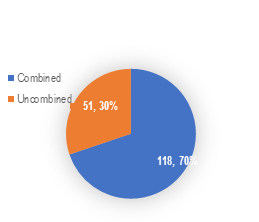
Figure 5: The current situation of the combination of vendor economy and urban culture.
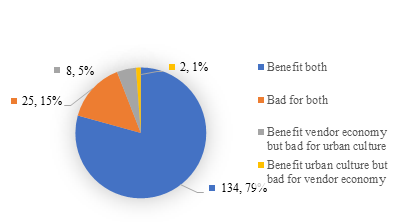
Figure 6: The mutual benefit of the combination of vendor economy and urban culture.
In Figure 5 and Figure 5, 118 people think the vendor economy in their habitual residence is combined with the urban culture, and 51 people think they are not combined. 134 people think that the combination is beneficial to their development, 25 people think it is bad for their development, 8 people think it is only beneficial to vendor economy and 2 people think it is only beneficial to urban culture.
While interviewing with consumers, each consumer said that there was a combination of local vendor economy and urban culture, but some were closely combined and some were not. The first impression of most guests on vendor economy was still dirty, messy and poor. While interviewing with merchants, the merchants said that the combination would be more conducive to their synergistic development.
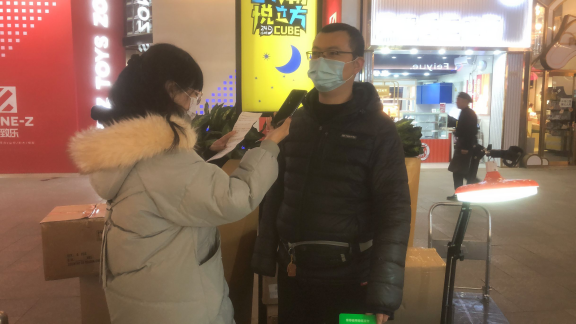
Figure 7: Interview in Jinan.
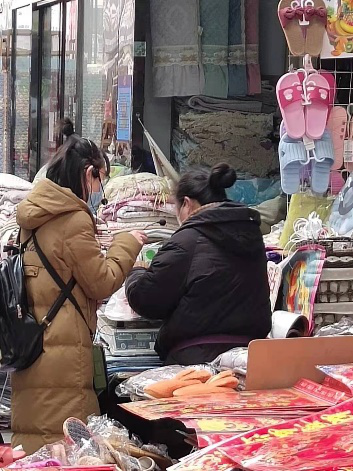
Figure 8: Interview in Yantai.
5. Discussion
Most participants believe that vendor economy has brought many benefits to people, but it also faces many problems. Thus, participants consider that the regulation and management of vendor economy need more government measures. This findings is consistent with the study of Cross, J. C. [11] , Liu [12] and Song [13]. According to them, the vendor economy is facing difficulties and conflicts. To solve these dilemmas, the government need to take measures like designated places for street vending activities and build a big data platform for intelligent management [14]. The measures mentioned are very similar to those obtained in questionnaires. The first measure can avoid the problem that the vendors are too scattered and difficult to manage. The second master the vendor information through the digital platform and accurately control the dynamic positioning of the stalls.
Participants also consider that the combination of vendor economy and urban culture will be more conducive to their future development. This findings is consistent with the study of Shen. The combination can better reflect the characteristics of both sides and stimulate their better development.
5.1. SWOT Analysis of the Vendor Economy in the Post-Epidemic Era
Strength. Firstly, there is national policy support. After Premier Li Keqiang pointed out the importance of the vendor economy, the central government took the first step to make the decision to abolish the inclusion of ground stalls in the criteria for selecting civilised cities, followed by 26 provinces and municipalities across the country enacting relevant policies on supporting the development of the vendor economy. For example, Chengdu City in Sichuan Province issued the Chengdu City Action Plan for Boosting Domestic Demand with New Consumption (2020-2022), which supports the piloting of outside stalls at specific times of the night in streets that are in a position to do so, forming a night-time economic ecosystem and enhancing the vitality of the night-time economy. The policy recognises the existence of the ground stall economy and points to the right direction for its development.
Secondly, the stallholders of the ground-floor economy are profit-driven. With no pressure to pay for renovation, housing rent or staff salaries, stall owners have lower operating costs. In addition, stallholders do not have to pay taxes to the government, so operating costs are reduced, and because they are very flexible, they are less risky and can be quickly resurrected even if they suffer damage to their interests.
Third, consumer demand orientation. The abundance and diversity of items can well meet consumers' consumption needs, and the low prices are in line with people's concept of pursuing value for money. Nowadays, the homogenisation of products is serious, and what low-income people need are generally products of low quality and realistic prices. This is one of the major advantages of the stall economy, which has a growing market.
Weakness. Firstly, it is detrimental to the interests of the regular big stores. After the ground stalls have satisfied part of the single shopping demand, if the physical shops do not have the advantage and competitiveness in terms of quality, variety and shop atmosphere, their economic interests are bound to be damaged to varying degrees by the same goods from the ground stalls. In turn, the overall business economy will be hit, to the detriment of building a healthy and harmonious business development structure and sales model.
Secondly, the subjective will of stall owners can affect the operation. Because there are no explicit regulations in place, market access is almost completely free, resulting in a wide range of floor stall vendors, making it difficult to control the quality of products and the number of sales can vary widely. This can involve changes in the mood of the vendors, and the lack of policing can lead to violence.
Opportunity. In the context of the normalisation of the prevention and control of the New Crown Pneumonia epidemic, the state as well as the government has given preferential policies to the vendor economy, deregulated the ground stall economy and issued policy dividends. China has taken encouraging measures for the development of the ground stall economy, while providing a development opportunity to crack the urban management problem, further strengthening the reform of the urban law enforcement system, following the development trend and further forming a sound system of laws and regulations and institutions.
Threat. Firstly, the prevention and control of the new crown epidemic inhibits the development of the vendor economy. Although the epidemic situation is now much improved, there is no shortage of certain areas where there are still more people suffering from Newcastle pneumonia. The intensive, mobile and contact nature of ground stalls will undoubtedly make it difficult to prevent and control the epidemic. Based on public health and safety and the health of the whole population, many provinces and municipalities will strictly restrict the time and territory of the ground stall economy, which compresses the space for the ground stall economy to operate and develop.
Secondly, under the impact of the Internet, the public is losing its following for the vendor economy. With the development of e-commerce, especially the rise of live-streaming with goods, young people are gradually losing their enthusiasm for the ground stall. For the previous generation the ground stall was a sentiment, but with the ongoing urbanisation and the rise of various technological technologies, the audience for the vendor economy is losing out.
5.2. The Rationality of the Existence of Vendor Economy
In terms of the people who run the stalls, there are two main categories, namely the unemployed and migrant workers in the city. For low-income groups with unstable jobs and insufficient skill levels, the floor stalls are a very good option. Ground stalls are a logical business model for a city, with low costs and mobility that cannot be matched by many other real economies. There is also no denying that the street stall economy creates a very affordable and convenient environment for consumers and also increases the livelihood income for stall owners. For this reason this, the "vendor economy" is a means of livelihood for the underprivileged, solving the problem of employment and relieving employment pressure. employment problems and alleviate the pressure of employment, as well as being an intuitive outward expression of urban culture. It is also a visual manifestation of urban culture.
5.3. The Suitability of the Vendor Economy to the City
Whether or not a city is suitable for promoting a vendor economy needs to be considered in a holistic manner, taking into account the cost of public resources invested by the government compared to the benefits that a vendor economy can bring, in order to find a balance between urban culture and the stall economy and maximise the benefits. Chengdu, for example, is a tourist city and has been developing its food stalls, while Beijing, as the political centre of China, has a different direction to Chengdu and needs to consider other aspects of its development and planning of the vendor economy. However, this does not mean that Beijing is not suitable for the development of a food stall economy, but rather that it is not suitable for the form of food stall economy promoted by the city of Chengdu.
The types of vendor economy can be divided into itinerant vendors and flea markets held at regular intervals. Cosmopolitan cities such as Milan and Paris are very famous for their flea markets, which have also become unique sights and tourist attractions in these cities. Many countries have different regulations for the former type of itinerant vendors. Japan, for example, has adopted a legislative initiative that requires items to be sold only at government-permitted times and locations, and a portion of the stall fee is levied on the vendor. In addition, Japan has set up a coordinating authority to ensure that stallholders clean up after their stalls to avoid environmental pollution.
And from the three cities in this field survey, Jinan, as the capital city of Shandong Province, has more night markets represented by the Honglou Night Market and the Huanlian Night Market, which are developing better and better under government regulation and policy support. In contrast, the Yunjin Night Market in northern Jinan has long been smaller and the number of merchants has been cut back. Yantai, a second-tier city in Shandong Province, has a thriving economy, especially after Premier Li Keqiang visited and pointed out the importance of the vendor economy, formulated seven opinions on optimising the vendor economy, established a cluster of convenient stalls, and incorporated local characteristics into many of the products sold at the stalls, with snacks such as "Yantai casseroles" showcasing local culture. Weihai is a third-tier city in Shandong province, located in the easternmost part of the province, surrounded by the sea on three sides and close to South Korea and North Korea. Tourism is one of the biggest drivers supporting the local economy, so the products sold at the stalls reflect the local cultural colours as well as a strong Korean peninsula influence, reflecting the diversity of features.
It is clear that the vendor economy is compatible with the city and that the two are not mutually exclusive, and that the right combination of urban culture and the vendor economy can have unexpectedly positive effects and stimulate economic development.
5.4. Suggestions to Promote the Recovery and Development of the Vendor Economy
At this particular time in the post-epidemic era, it is not possible to impose a total ban on the floor stall economy in view of issues such as people's livelihood and employment, but it is also obviously unwise to deregulate the floor stall economy altogether.
First of all, government should have to improve laws and regulations, formulate reasonable and scientific rules and regulations, implement punitive actions for illegal occupation of roads, damage to the environment and other undesirable behaviours, regulate the market order and strengthen supervision.
Secondly, the vendor economy will be combined with the Internet to create a new mechanism, using the "Internet +" model to create the advantages of the vendor economy development. Collecting information from manufacturers to achieve product traceability at source and to avoid the problem of uneven quality leading to damage to consumer rights.
Thirdly, the government should encourage the launch of special ground stall products to enhance the cultural attributes of the vendor economy. The government can divide the ground stalls into two categories: buying and experiential. Compared to the former, the latter can incorporate some local culture, such as Sichuan's face painting performances, which in turn will drive consumption growth. These stalls can also become local landmarks to attract tourists to visit the area.
The limitation of this research report is that it didn’t visit more stall night markets or collect more questionnaire information of different ages.
6. Conclusion
6.1. Results
On the basis of different surveys, it can be seen that most participants believe the government needs to take more effective measures for the current situation of the vendor economy. In the direction of the combined development of vendor economy and urban culture, people believe that the combination of the two can better reflect regional characteristics and further stimulate economic development.
This article shows people's recognition of different government measures and discusses the relationship between vendor economy and urban culture, which is conducive to the government to formulate relevant measures to stimulate economy and increase the influence of urban characteristics.
In summary, the revival of the vendor economy illustrates that China's urban development and construction is not only focused on civilisation and orderly governance, but also on the humanism of the city. The vendor economy occupies a very important place in economic development everywhere, especially in the post-epidemic era, where it is a necessary initiative to promote people's livelihood and employment development. It is by grasping the characteristics of the development of the vendor economy, guiding it to coordinate with the economic development of the city and combining it with local local characteristics and culture that the function and role of the ground stall economy can be effectively brought into play.
This article is mainly from the perspective of teenagers. We can't know the thoughts of more people, but this problem can be solved in the future.
6.2. Suggestions
The report mainly observes people's views on different measures and their recognition of the combination of vendor economy and urban culture. The survey results show that people believe that formulating more effective measures can better promote the development, which can provide some advice to government to make policies. While it didn’t discuss the detailed measures on the combination of vendor economy and urban culture, and the research is limited to individual cities and people. The following course of action is proposed: the research needs to be carried out in more cities and expand the scope of the research population. The targeted population will be more subdivided into operators, consumers and the government. The feasibility study of measures can be further improved by contacting the government by telephone.
References
[1]. China Daily, Shanghai kicks off night festival to stimulate economy, (2020), viewed on2021/10/21, http://ex.chinadaily.com.cn/exchange/partners/45/rss/channel/www/columns/852i2s/stories/WS5edef3bea310834817251bfc.html
[2]. Shen, J. L.: Post-epidemic era ground stall economy normalization analysis. Cooperative Economy and Technology (18), 6-9 (2021).
[3]. Qing, S.: Analysis on the Feasibility of China's "Vendor Economy" under the New Economic Conditio. Financial Forum 9 (2), 96-98 (2020).
[4]. Flock, R., Breitung, W.: Migrant street vendors in urban China and the social production of public space. Population, Space and Place 22(2), 158–169 (2016).
[5]. Song Q., Analysis of the development status and prospects of the floor stand economy. The Business Circulate, 30-32 (2022).
[6]. Yao, S. X.: Reflections on unleashing the dynamism of the ground-floor economy in the post-epidemic era . Old Brand Marketing (5), 45-47 (2022).
[7]. Wang, Y. S.: Current status and characteristics of the rural ground-floor economy in the post-epidemic era. Economic Research Guide 23, 14-16 (2022).
[8]. Hyatt, D.: The necessity of waste sorting. China's national online news, (2019), viewed on2021/10/20, http://www.china.org.cn/opinion/2019-07/09/content_74968446.html
[9]. Bell, J. S., Loukaitou-Sideris, A.: Sidewalk informality: An examination of street vending regulation in China. International Planning Studies 19(3–4), 221–243 (2014).
[10]. Jiang WH.: A study on the development of a normalized floor stall economy. Cooperative economy and science and technology 8, 35-37 (2022).
[11]. Cross, J. C.: Street vendors, modernity and post modernity: Conflict and compromise in the global economy. International Journal of Sociology and Social Policy 20(1–2), 29–51 (2000).
[12]. Liu, Y.: The human fireworks are the most soothing to the hearts of people. Aug 6, pp.2. Xinxiang Daily (2020).
[13]. Song, S. C.: Street stall economy in China in the post-COVID-19 era: Dilemmas and regulatory suggestions. Research in Globalization 2, 1-5 (2020).
[14]. Reid, D. M., Fram, E. H., Chi, G. T.: A study of Chinese street vendors: How they operate. Journal of Asia-Pacific Business 11(4), 244–257 (2010).
Cite this article
Yu,K. (2023). Analysis of the Normalization of the Development of the Vendor Economy in the Post-epidemic Era. Advances in Economics, Management and Political Sciences,6,8-22.
Data availability
The datasets used and/or analyzed during the current study will be available from the authors upon reasonable request.
Disclaimer/Publisher's Note
The statements, opinions and data contained in all publications are solely those of the individual author(s) and contributor(s) and not of EWA Publishing and/or the editor(s). EWA Publishing and/or the editor(s) disclaim responsibility for any injury to people or property resulting from any ideas, methods, instructions or products referred to in the content.
About volume
Volume title: Proceedings of the 2022 International Conference on Financial Technology and Business Analysis (ICFTBA 2022), Part 2
© 2024 by the author(s). Licensee EWA Publishing, Oxford, UK. This article is an open access article distributed under the terms and
conditions of the Creative Commons Attribution (CC BY) license. Authors who
publish this series agree to the following terms:
1. Authors retain copyright and grant the series right of first publication with the work simultaneously licensed under a Creative Commons
Attribution License that allows others to share the work with an acknowledgment of the work's authorship and initial publication in this
series.
2. Authors are able to enter into separate, additional contractual arrangements for the non-exclusive distribution of the series's published
version of the work (e.g., post it to an institutional repository or publish it in a book), with an acknowledgment of its initial
publication in this series.
3. Authors are permitted and encouraged to post their work online (e.g., in institutional repositories or on their website) prior to and
during the submission process, as it can lead to productive exchanges, as well as earlier and greater citation of published work (See
Open access policy for details).
References
[1]. China Daily, Shanghai kicks off night festival to stimulate economy, (2020), viewed on2021/10/21, http://ex.chinadaily.com.cn/exchange/partners/45/rss/channel/www/columns/852i2s/stories/WS5edef3bea310834817251bfc.html
[2]. Shen, J. L.: Post-epidemic era ground stall economy normalization analysis. Cooperative Economy and Technology (18), 6-9 (2021).
[3]. Qing, S.: Analysis on the Feasibility of China's "Vendor Economy" under the New Economic Conditio. Financial Forum 9 (2), 96-98 (2020).
[4]. Flock, R., Breitung, W.: Migrant street vendors in urban China and the social production of public space. Population, Space and Place 22(2), 158–169 (2016).
[5]. Song Q., Analysis of the development status and prospects of the floor stand economy. The Business Circulate, 30-32 (2022).
[6]. Yao, S. X.: Reflections on unleashing the dynamism of the ground-floor economy in the post-epidemic era . Old Brand Marketing (5), 45-47 (2022).
[7]. Wang, Y. S.: Current status and characteristics of the rural ground-floor economy in the post-epidemic era. Economic Research Guide 23, 14-16 (2022).
[8]. Hyatt, D.: The necessity of waste sorting. China's national online news, (2019), viewed on2021/10/20, http://www.china.org.cn/opinion/2019-07/09/content_74968446.html
[9]. Bell, J. S., Loukaitou-Sideris, A.: Sidewalk informality: An examination of street vending regulation in China. International Planning Studies 19(3–4), 221–243 (2014).
[10]. Jiang WH.: A study on the development of a normalized floor stall economy. Cooperative economy and science and technology 8, 35-37 (2022).
[11]. Cross, J. C.: Street vendors, modernity and post modernity: Conflict and compromise in the global economy. International Journal of Sociology and Social Policy 20(1–2), 29–51 (2000).
[12]. Liu, Y.: The human fireworks are the most soothing to the hearts of people. Aug 6, pp.2. Xinxiang Daily (2020).
[13]. Song, S. C.: Street stall economy in China in the post-COVID-19 era: Dilemmas and regulatory suggestions. Research in Globalization 2, 1-5 (2020).
[14]. Reid, D. M., Fram, E. H., Chi, G. T.: A study of Chinese street vendors: How they operate. Journal of Asia-Pacific Business 11(4), 244–257 (2010).









